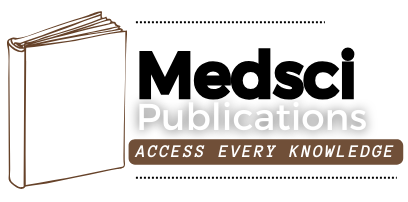Prevalence of Anemia among Adolescent Schools Girls of Delhi: A Cross Sectional School Based Study
Keywords:
Anemia, adolescent, prevalence, nutrition, schoolAbstract
Background: Anemia is one of the major public health problems in women of developing countries. Recent studies in India have shown that around 90% of adolescent girls are anemic.
Objectives: To find the prevalence of anemia in adolescent school girls.
Material and methods: It is a school based cross sectional study, in two randomly selected Government Schools of Delhi. Total of 210 adolescent girls were screened from both the schools. Dietary as- sessment and symptoms of anemia were also assessed.
Results: A total of 210 girls were screened of which 203 (96.7%) were anemic. WHO criteria was used to classify anemia. Accord- ing to this criteria 93 (44.3%) were suffering from mild anemia, 101 (48.1%) moderate anemia and 9 (4.3%) were suffering from severe anemia. About 2/3rd of the study subjects (68.2%) had a history of skipping meals. History of consuming tea or coffee was very high (94.8%). Almost all (99%) of the adolescent school girls consume tea/coffee with meal or within 1 hour of taking meal.
Conclusions: Anemia is highly prevalent amongst the adolescent school girls.
References
de Benoist B, Mclean E, Egli I et al. Worldwide prevalence of anaemia 1993-2005. WHO Global Database on Anaemia Geneva, World Health Organization, 2008.
World Health Organization. Nutrition in adolescence-issues and challenges for the health sector; 2005.
Toteja GS, Singh P, Dhillon BS, Saxena BN, Ahmed FU, Singh RP et al. Prevalence of anemia among pregnant wom- en and adolescent girls in 16 districts of India. Food Nutr Bull 2006; 27:311-315.
Kurz KM, Johnson WC. The nutrition and lives of adoles- cents in developing countries. Findings from the nutrition of adolescent girls research programme. Washington, DC: In- ternational Center for Research on Women; 1994.
Gillespie S. Major issues in controlling iron deficiency. Ot- tawa: Micronutrient Initiative; 1998.
Sharma K, Gandhi H. A study on assessing the impact of adolescent anaemia control project among out of school ad- olescent girls, a midterm evaluation in Shivpuri district, Madhya Pradesh. Department of Women and Child Devel- opment, State Government of Madhya Pradesh, India and UNICEF; 2002.n-
Van Schenck H, Falkensson M, Lundberg B. Evaluation of “HemoCue”, a new device for determining hemoglobin. Clin Chem 1986;32:526-529.
WHO/UNICEF/UNU. Iron Deficiency: indicators for as- sessment and strategies for prevention. Geneva: World health organization;1998.
Bulliyy G, Mallick G, Sethy GS, Kar SK. Hemoglobin status of non-school going adolescent girls in three districts of Orissa, India. Int J Adoles Med Health 2007;19:395-406.
Gowarikar RS, Gowarikar SB, Tripathi BC. Prevalence of anemia in adolescent girls of Ujjain in western M.P. Indian J Nutr Dietet 2002;39:493-498.
Rati SA, Jawadagi S. Prevalence of anemia among adoles- cent girls studying in selected schools. IJSR 2014;3:1237- 1242.
Chaudhary P, Vir S. Prevention and strategies for control of iron deficiency anaemia. In: Sachdev HPS & Chaudhury P ed. Nutrition in children: Developing country concerns 1994:492–524.
Verma A, Rawal VS, Kedia G, Kumar D, Chauhan J. Factors influencing anaemia among girls of school going age (6-18 years) from the slums of Ahmedabad city. Indian J Com- munity Med 2004;29:25-26.
Gopalan C, Ramasastri BV, Balasubramaniam SC. Nutritive value of Indian foods. ICMR. Hyderabad, India: National Institute of Nutrition Press;1993:47-58.
Rossander L. Absorption of iron from breakfast meals. Am J Clin Nutr 1979;32:2484-2489.
Downloads
Published
How to Cite
Issue
Section
License

This work is licensed under a Creative Commons Attribution-ShareAlike 4.0 International License.
The authors retain the copyright of their article, with first publication rights granted to Medsci Publications.






